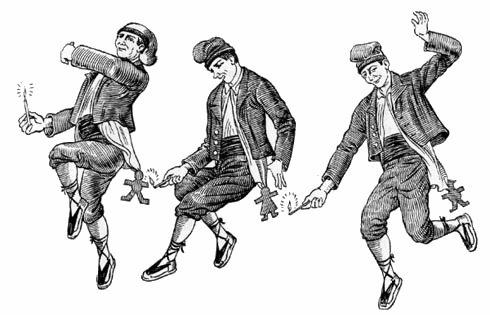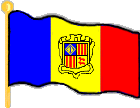El Tio Fresco
"El Tio Fresco" is a Carnival dance song. The dancers' have a paper doll pinned to their backs. "Tio Fresco" is the name of the paper figure (or a twist of paper) that's pinned to the dancers' backs.
The dance is known as "ball del tio fresco", "ball del tio tio", or "ball del patllari".

El Tio Fresco
The Tio Fresco
Carnival Song
Carnival Song
(Catalan)
(English)
Qui te l'encendrà,
el Tio Tio Fresco,
qui te l'encendrà,
el Tio de detràs.
Jo te l'encendré
el Tio Tio Fresco,
jo te l'encendrè,
el Tio de paper.
Tu no me l'encenràs,
el meu Tio Fresco,
tu no me l'encenràs
el meu Tio detràs.
Who will set on fire,
My Tio, Tio Fresco,
Who will set on fire,
My Tio from behind.
I will set on fire,
Your Tio, Tio Fresco,
I will set him on fire,
Your paper Tio.
You won't set on fire,
My Tio, Tio Fresco,
You won't set on fire,
My Tio from behind.
Notes
Different versions of this dance exist:
Children's Version: Can be found in the Game Instructions.
Adult Versions:
Version 1 - The person who is "Tió Fresco" (or "Patllari" - the dancer) goes in the center of the circle with a long tail hanging from his back down to the floor while the others dance in a circle around him. They would try to set his tail on fire, so he would jump and scamper around to avoid it.
Version 2 - The dancers move in a circle, each of them have a paper figure hanging from their backs and a torch in their hands. Each of them tries to set on fire the figure on the dancer ahead of them while avoiding getting his own figure set on fire.
According to this document: "...in Encamp, this danced used to be performed around sticks crossed on the floor. The dancer who was dancing in the middle had to jump over the sticks without touching them; if he touched them he had to let another person replace him. A straw tail was tied to every dancer who jumped over the crossed sticks and he had to constantly shake his bottom to prevent his fellow dancers who danced around him from setting his tail on fire. The dancer who had his tail set on fire has to pay for a round of wine for the other dancers."
This dance is also danced in Roussillon, the Catalan-speaking part of France.
Game Instructions
The kids go in a circle holding hands. One child goes in the middle with a headscarf stuck in their belt. During the 1st verse, the child in the middle goes clockwise while the others dance counter-clockwise. At the end of the 1st verse, they stop holding hands and they jump forwards and backwards with feet together. Meanwhile, the child in the middle gets closer to the circle to allow someone to grab the headscarf. The one who gets the scarf sticks it in his own belt and goes into the middle. The one who was in the middle joins the circle and the game starts over again.
Comments
Alicia wrote, "In 1931, Sara Llorens collected this in her book, 'Cançoner de Pineda' as a dance song with 'El tió fresco' as its title. According to what she says, most people say 'tió fresco', i.e. they clearly pronounce 'tió' with the stress on the "o" as if they were referring to a 'tió' (large log meant to be burnt in the fireplace) and not to a 'tio' (mother's or father's brother). The meaning of 'el Tio de paper' (the paper tio) is clear."
*****
You can listen to El Tio Fresco here.


Thanks!
Thanks!
Thanks and Acknowledgements
Many thanks to Alicia Calvo for her comments.
Contribution: Monique, translation Monique and Lisa.
Image: Comes from "Costumari Català" (Catalan Costumes) by Joan Amades (1890 - 1959).
Moltes gràcies


























